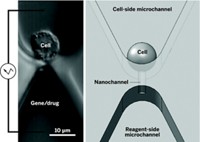Advertisement
Grab your lab coat. Let's get started
Welcome!
Welcome!
Create an account below to get 6 C&EN articles per month, receive newsletters and more - all free.
It seems this is your first time logging in online. Please enter the following information to continue.
As an ACS member you automatically get access to this site. All we need is few more details to create your reading experience.
Not you? Sign in with a different account.
Not you? Sign in with a different account.
ERROR 1
ERROR 1
ERROR 2
ERROR 2
ERROR 2
ERROR 2
ERROR 2
Password and Confirm password must match.
If you have an ACS member number, please enter it here so we can link this account to your membership. (optional)
ERROR 2
ACS values your privacy. By submitting your information, you are gaining access to C&EN and subscribing to our weekly newsletter. We use the information you provide to make your reading experience better, and we will never sell your data to third party members.
Materials
Mimicking Multiple Organs On A Chip
Microfluidic device approximates human metabolism for drug testing studies
by Celia Henry Arnaud
October 26, 2009
| A version of this story appeared in
Volume 87, Issue 43

A new microfluidic device takes a step toward mimicking human metabolism for applications such as drug testing. Hanry Yu of the Institute of Bioengineering & Nanotechnology and the National University of Singapore and coworkers have developed a three-dimensional microfluidic cell culture system with compartments containing lung, liver, kidney, and adipose cells (Lab Chip, DOI: 10.1039/b915147h). The compartments are spatially isolated but fluidically linked. Each compartment consists of a central section where cells are immobilized on a micropillar array and two flanking channels through which the medium flows and diffuses into the cells. During cell culture, the medium flows through the lung compartment first and then through the other three compartments in parallel. The researchers optimized a single culture medium to use with all four cell types. They found that adding growth factors enhanced lung cell function but inhibited liver cell function, so they encapsulated the growth factor in controlled-release gelatin microspheres. Adding the microspheres to the culture medium improved lung cell function without hurting the other cells.




Join the conversation
Contact the reporter
Submit a Letter to the Editor for publication
Engage with us on Twitter